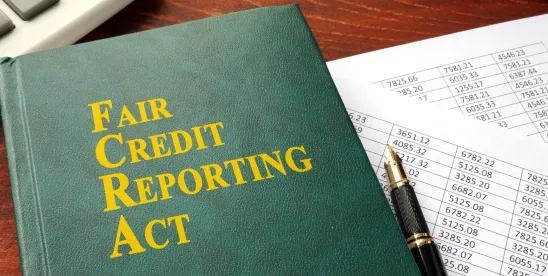On February 27, 2020, in a 2-1 decision, the Ninth Circuit in Ramirez v. TransUnion, LLC held that every member of the class must have standing in order to recover damages at the final judgment stage. Judge McKeown filed a partial dissent.
Ramirez involves TransUnion’s “OFAC Advisor” product, which added an alert to a consumer’s credit report indicating whether the individual was a Specially Designated Nationals (“SDNs”) on the list maintained by the Office of Foreign Assets Control (“OFAC”). SDNs are prohibited from transacting business in the United States due to national security reasons, and a company can face a fine for transacting business with an SDN. TransUnion used a third-party company, Accuity, Inc., to obtain the information about whether a consumer was on the OFAC list. Accuity’s software would return a “hit” based on a simple “name-only” search.
The lead plaintiff, Sergio Ramirez, attempted to buy a car in 2011. After negotiating the terms, the dealership ran a joint credit report on Mr. Ramirez and his wife. The credit report, which was prepared by TransUnion, contained an alert on the first page that Sergio Ramirez’s matched a name on the OFAC list. The dealership refused to sell the car to Ramirez because his name appeared on “a terrorist list.” The report listed the names and birthdates of the two individuals who appeared on the OFAC list. Based on the names and dates of birth, it was clear that the Plaintiff was not the same “Sergio Ramirez” who appeared on the list.
Ramirez contacted TransUnion after his experience at the dealership and requested a copy of his credit report. Importantly, the copy of the credit report sent to the Plaintiff did not contain the OFAC alert. TransUnion’s policy was to redact the OFAC report when a consumer requested their credit report. TransUnion sent two letters in response to Plaintiff’s request. The first letter enclosed a copy of his credit report, and included information on how to dispute information contained on the credit report along with an FRCA “Summary of Rights” form. The second letter (the “OFAC Letter”) alerted Plaintiff that his name was considered a potential match to the OFAC list. Importantly, the OFAC Letter did not contain a summary of rights form nor give any instructions on how to dispute the OFAC information.
Ramirez filed suit on behalf of himself and the 8,184 other consumers who requested a copy of their credit report and also received the OFAC Letter. The case proceeded to a jury trial on three claims: (1) willful failure to follow reasonable procedures to ensure the accuracy of the OFAC alerts, (2) willful failure to disclose their entire credit reports due to redacting the OFAC alert, and (3) willful failure to provide a summary of rights due to the failure to include it with the OFAC letter. The jury returned a verdict in favor of the class and awarded $8 million in statutory damages and $52 million in punitive damages.
TransUnion advanced several arguments on appeal, including that each class member – besides Ramirez – could not satisfy the Article III standing requirements. The majority first addressed the standing and held, as a matter of first impression, that “each member of a class certified under Rule 23 must satisfy the bare minimum of Article III standing at the final judgment stage of a class action in order to recover monetary damages in federal court.”
In Robins v. Spokeo, Inc., 867 F.3d 1108, 1111 (9th Cir. 2017) (“Spokeo III”), following remand form the United States Supreme Court, the Ninth Circuit adopted a two-part test to determine whether the violation of a statutory right constitutes a concrete injury: (1) whether the statutory provisions were established to “protect concrete interests (as opposed to purely procedural rights)”; and (2) whether the party was actually harmed or there is a material risk of harm based on the alleged violations.
Applying this new standard to the Ramirez class’s reasonable procedures claim, the majority determined that all class members “suffered a material risk of harm to their concrete interests.” First, the Ninth Circuit easily determined that the Ramirez class satisfied step one based on the stated purpose of the FCRA. As to the second part, the majority concluded that all class members had standing because of the severity of the error by stating that a consumer appeared on the OFAC list. TransUnion argued that the vast majority of the class did not have standing because their credit report was never published to a potential creditor. The majority rejected this argument as “too narrow” of a reading on Spokeo III. Spokeo III did not reach the question of whether a plaintiff could satisfy the concrete injury requirement if the information was never published. In Ramirez, the majority determined that the potential to disclose such damaging incorrect information was sufficient to establish that every class member suffered a material risk of harm. The majority opinion left open the issue of whether publication will be required in every case.
The majority reached the same conclusion on standing on the disclosure claims based on similar rationale. Namely, every class member had a material risk of harm based on the policy of redacting the OFAC alert on the requested consumer report and failure to include a summary of rights with the OFAC letter.
Responding to TransUnion’s argument that the violations were not willful, the court easily rejected that argument based on the Third Circuit’s opinion in Cortez v. TransUnion, LLC, 617 F.3d 688 (3d Cir. 2010), which affirmed a jury award based on the same product at issue. In the Ninth Circuit’s view, “TransUnion was provided with much of the guidance it needed to interpret its obligations under the FCRA with respect to OFAC Alerts in 2010 when Cortez was decided. Despite this warning, TransUnion continued to use problematic matching technology and to treat OFAC information as separate from other types of information on consumer report.”
TransUnion’s only successful argument was that the punitive damages award was grossly excessive. The majority remanded the case for a reduction of the punitive damages award to the constitutionally permissible 4 to 1 ratio.
Judge McKeown dissented on the standing issue. Based on Judge McKeown’s view of the record, there was no evidence presented of any harm or damages to the remaining class members whose credit reports were not published. Rather, the trial focused on Ramirez and his unique circumstances because it presented a great trial narrative. In her view, the trial court erred by allowing the jury to speculate that the absent class members suffered damages similar to Ramirez. In her view, “Speculation can complete a story but it cannot” be used to “cure the infirmity” of the necessary evidence to establish that each class member suffered a concrete injury.
The Ninth Circuit recently granted the parties’ joint motion to stay the mandate pending the filing of a petition for certiorari to the United States Supreme Court.




 />i
/>i
